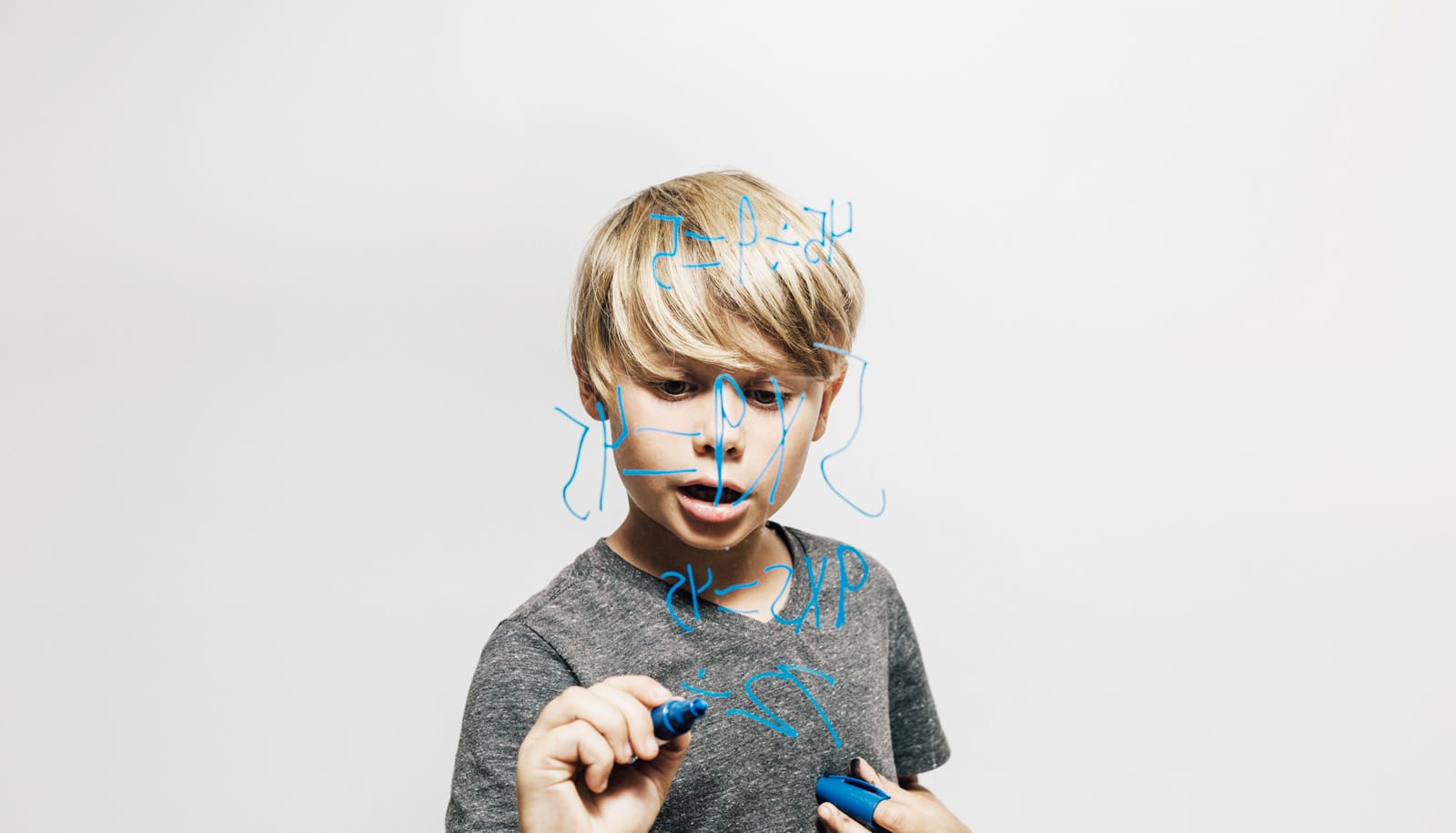Having a positive attitude about math is connected to better function of the hippocampus, an important memory center in the brain, during performance of arithmetic problems, a new study of elementary school students suggests.
Educators have long observed higher math scores in children who show more interest in math and perceive themselves as being better at it. But it has not been clear if this attitude simply reflects other capacities, such as higher intelligence. The new study marks the first time that scientists have identified the brain pathway that links a positive attitude toward math to achievement in the subject.
The new study also found that, even once IQ and other confounding factors were accounted for, a positive attitude toward math still predicted which students had stronger math performance.
Arithmetic attitude
“Attitude is really important,” says Lang Chen, the study’s lead author and a postdoctoral scholar in psychiatry and behavioral sciences at Stanford University. “Based on our data, the unique contribution of positive attitude to math achievement is as large as the contribution from IQ.”
The scientists had not expected the contribution of attitude to be so large, Chen says. The mechanism underlying its link to cognitive performance was also unexpected.
“It was really surprising to see that the link works through a very classical learning and memory system in the brain,” says senior author Vinod Menon, professor of psychiatry and behavioral sciences.
“Having a positive attitude acts directly on your memory and learning system…”
Researchers had previously hypothesized that the brain’s reward centers might drive the link between attitude and achievement—perhaps children with better attitudes were better at math because they found it more rewarding or motivating.
“Instead, we saw that if you have a strong interest and self-perceived ability in math, it results in enhanced memory and more efficient engagement of the brain’s problem-solving capacities,” Menon says.
The researchers administered standard questionnaires to 240 children ages 7 to 10, assessing demographics, IQ, reading ability, and working-memory capacity. The children’s level of math achievement was measured with tests of their knowledge of arithmetic facts and ability to solve math word problems. Parents or guardians answered surveys about the children’s behavioral and emotional characteristics, as well as their anxiety about math and general anxiety. Children also answered a survey that assessed their attitude toward math, including questions about interest in math and self-perceived math ability, as well as their attitude toward academics in general.
Forty-seven children from the group also participated in MRI brain scans while performing arithmetic problems. Tests were conducted outside the MRI scanner to discern which problem-solving strategies they used. An independent group of 28 children also was given MRI scans and other assessments in an attempt to replicate the findings from the cohort previously given brain scans.
Math and memory
Math performance correlated with a positive attitude toward math even after statistically controlling for IQ, working memory, math anxiety, general anxiety, and general attitude toward academics, the study found.
Children with poor attitudes toward math rarely performed well in the subject, while those with strongly positive attitudes had a range of math achievement.
“A positive attitude opens the door for children to do well but does not guarantee that they will; that depends on other factors as well,” Chen says.
From the brain-imaging results, the scientists found that, when a child was solving a math problem, his or her positive-attitude scores correlated with activation in the hippocampus, an important memory and learning center in the brain. Activity in the brain’s reward centers, including the amygdala and the ventral striatum, was not linked to a positive attitude toward math.
Belief in success predicts how kids do in math and reading
Statistical modeling of the brain imaging results suggested that the hippocampus mediates the link between positive attitude and efficient retrieval of facts from memory, which in turn is associated with better problem solving abilities.
“Having a positive attitude acts directly on your memory and learning system,” Chen says. “I think that’s really important and interesting.”
The study could not disentangle the extent to which a positive attitude came from a child’s prior success in math.
“We think the relationship between positive attitude and math achievement is mutual, bi-directional,” Chen says. “We think it’s like bootstrapping: A good attitude opens the door to high achievement, which means you then have a better attitude, getting you into a good circle of learning. And it can probably go the other way and be a vicious circle, too.”
‘Maximizing learning’
The findings may provide a new avenue for improving academic performance and learning in children who are struggling, Menon says, cautioning that this idea still needs to be tested through active interventions.
“Typically, we focus on skill learning in individual academic domains, but our new work suggests that looking at children’s beliefs about a subject and their self-perceived abilities might provide another inroad to maximizing learning,” Menon says.
What we learn by tracking gifted kids for 45 years
The findings also offer a potential explanation for how a particularly passionate teacher can nurture students’ interest and learning capacities for a subject, he adds. Inspiring teachers may be instinctively sharing their own interest, as well as instilling students in the belief that they can be good at the subject, building a positive attitude even if the student did not have it before.
Funding for the research came from the National Institutes of Health. Stanford’s psychiatry and behavioral sciences department also supported the work.
The researchers report their findings in the journal Psychological Science.
Source: Stanford University



